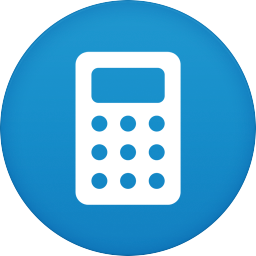Resources
Video: A Personal Income Protection Story
Doug Waters spent several decades in the insurance industry, most of that time dedicated to selling individual disability insurance. In fact, he devoted several years to helping The Standard’s distribution partners spread the message of income protection. When Doug was diagnosed with cancer, he found himself relying on the same benefits he recommended throughout his professional life.
Disability Income Webinars – DI Days 2021
What to expect during the underwriting process:
Gather Client Information
Information such as name, gender, date of birth, tobacco use, are all essential to begin underwriting the case.
Request A Quote
Access our online quote request, fax, or phone your client’s information to us.
Carrier Appointment
Decide which carrier(s) will support your client and local/regional affects.
Receive Proposals
We present DI or LTC insurance proposals to you, which you can then take to your client.
Apply for Coverage
- Complete your application
- Send your application
- Present income documentation
- Schedule medical and telephone application appointments
Underwriting
Wait 4-8 weeks depending on the client’s medical history. Check with us on the status of your case.
Policy In-Force
Complete policy delivery receipt
Receive Commission
Get your check.
Glossary of Terms
a
Actively at Work or Active at Work
Employee is performing the normal duties of his occupation and working the number of hours set forth in the Application.
Activities of Daily Living (ADL)
Activities as defined by HIPAA where additional benefits may be provided should the insured be unable to perform them. Typically the ADL’s are bathing, dressing, feeding, transferring, toileting and continence as well as severe cognitive impairment.
ADEA Benefit Duration
As defined by the Age Discrimination in Employment Act, multiple schedules of benefits designed to protect employees over the age of 40 from discrimination in benefit plans due to age.
b
Basic Monthly Earnings
The most common definition of covered earnings is the basic monthly earnings or basic wages. This is typically defined as salary or the hourly wage not to exceed 40 hours a week. Items not included as basic monthly earnings might typically be commissions, bonuses, tips, shift differentials, overtime pay, etc.
Benefit Offsets
Income and benefit sources which will reduce the amount of the group long term disability plan benefits.
Benefit Percentage
The percentage applied to covered earnings in determining the benefit amount.
c
Continuity From Prior Policy
The provision which allows payment for a pre-existing condition when the claimant was insured under a prior plan. The insured is paid under either the current plan or the prior plan whichever has the lesser monthly benefit.
Contributory Plan
A plan where the employee pays some or all of the cost association with the plan.
Conversion Provision
The right of a participant to continue insurance on an individual basis. The policy terms and provisions may not be the same as the underlying group LTD plan.
Cost of Living Adjustment Provision
A provision which if included will adjust the disability benefit by a formula defined in the contract causing the benefit to increase. This is designed to help offset the negative effects of inflation on a claimant’s benefits.
Covered Earnings
The earnings which are used to calculate the basis for premium payment by the employer and the corresponding monthly benefit available to the claimant.
d
Definition of Disability
The criteria used to determine whether a claimant is disabled and eligible for benefit payments. The definition of disability is a key component of the policy.
e
Earnings Test
A common component of many disability policies which specifies how much a claimant can earn performing work and still qualify for benefits.
Eligibility Date
Date defined in the contract when an employee is eligible to be covered under the contract.
Elimination Period (Qualifying Period)
A period of time that the insured must wait before disability benefits begin to accrue.
ERISA
Employment Retirement Income Security Act of 1974 and is the body of federal law which governs most group disability and health benefit (called cafeteria) plans. Governing jurisdiction is the US Department of Labor which is a federal jurisdiction.
Evidence of Insurability (EOI)
Statement of medical history used to determine if an employee will be approved for coverage when the amount of disability insurance is in excess of the guarantee issue amount.
g
Gainful Occupation
An occupation that is or can be expected to provide the claimant with an income at least equal to their gross disability payment within 12 months of return to work.
Guarantee Issue Amount (GI)
The highest amount of disability benefit which will be provided without Evidence of Insurability.
i
Incentive Compensation
Typically defined as compensation paid as bonus, overtime or commissions. This income is often excluded from coverage under a group LTD plan.
Indexing
A provision which if included will use a formula to recalculate the claimant’s pre-disability earnings by an inflation factor, typically the CPI-U. This will help to alleviate some of the effects of inflation on the benefits paid as the pre-disability earnings amount will grow.
m
Material and Substantial Duties
The set of skills or tasks required in an occupation. These are typically duties that cannot by reasonably omitted or modified without impairing the employee’s ability to perform his or her occupation. Small differences in word usage such as “a”, “the”, “some” and “all” can significantly impact the interpretations used at claim time and therefore the benefits payable under the contract.
Maximum Benefit Period
Depending on the age at the time of disability, this is the maximum period benefits may be paid.
Maximum Capacity
Based on the claimant’s restrictions and limitations, the greatest extent of work he or she is able to do that is reasonably available. Determined by the insurance carrier.
Maximum Monthly Benefit
The maximum monthly benefit payable to the claimant regardless of income amount or percentage of income insured.
Mental Illness and Substance Abuse Benefits
Benefit terms and durations for conditions defined in the contract which are related to mental health and/or abuse of substances like alcohol or drugs. Benefits are typically limited to a period of time which may be an aggregate over the life of the policy or combined with other conditions to reach a benefit aggregate.
Minimum Benefit
The minimum monthly benefit amount payable to the claimant after offsets. This ensures the claimant will receive at a least a small benefit from the policy. Typically $100 or less.
Minimum Work Hours
Established in the plan document to determine the required average work hours an employee must work to be eligible for coverage.
n
Non-contributory Plan
A plan where the employer pays for the full cost of coverage.
o
Occupation Test
A common component of a disability plan which specifies the loss of the ability to perform the duties of an occupation in determining disability.
Other Income Benefits
Defined income sources which will offset against any payable policy benefits. Common items are social security benefits, sick pay benefits, retirement plan distributions due to a disability, no-fault auto policy benefits, etc.
Own Occupation / Regular Occupation Definition of Disability
The occupation the employee is routinely performing when disability begins. Own occupation typically does not mean the specific tasks or job the employee is performing for the employer or at a specific location. Enhanced Own Occupation provisions may stipulate the routine duties of a specialty in the fields of medicine, law or other defined profession.
Own Occupation Period
The period of time as defined in the schedule of benefits when the Own Occupation period applies. After expiration of the Own Occupation Period an alternative definition of disability will apply.
p
Partial Disability
The claimant is working part-time, and has satisfied the Elimination Period for total disability.
Pre-Disability Earnings
The earnings, as defined in the policy, in effect prior to the date disability begins.
Pre-existing Condition
Any condition for which the employee received medical treatment, consultation, care or services including diagnostic measures, or taken prescribed drugs or medicines during any given period as described in the policy. These provisions protect the disability insurer from paying a claim for conditions which existed before the employee became eligible for coverage.
Prudent Person Provision
A prudent person is one who seeks treatment, consultation, or other medical advice when it is reasonably evident they are sick. A disabling condition could be considered a “pre-existing” condition if a “prudent person” would have sought treatment.
r
Reasonable Accommodation (Workplace Modification)
Additional benefits to the employer for modifications to a claimants workstation which can make it possible for them to return to work in some capacity.
Recurrent Disability
If the claimant returns to work as an active full-time employee for a period of time as defined in the policy, any recurrence of the same disability will be treated as a continuation of the prior disability and a new elimination period will not have to be satisfied. If the return to work exceeds the period defined in the policy it will be considered a new disability with respect to benefit commencement and maximum benefit period.
Own / Regular Occupation
Means the occupation the claimant is routinely performing when disability begins. Most policies stipulate that the insurance company is to look at the occupation as it is normally performed in the national economy, instead of how the work tasks are performed for a specific employer or at a specific location, or job.
Rehabilitation Benefits
Typically used to define the terms of a program designed to return the employee to active work.
Residual Disability
An available option which does not require the employee to be totally disabled in order to qualify for benefit payments; an insured could work part-time in their own or any occupation and still be eligible for long-term disability benefits at the end of the elimination period.
Return to Work Provision
A provision providing enhanced benefit opportunities when the claimant returns to work. Typically limited to the first 12 months of return to work.
s
Self Reported Conditions
Symptoms that are self-reported by the claimant and that are not easily validated by objective testing. This is typically used to limit the duration of disability benefits and may be part of a special conditions limitation as well. Typical examples induce environmental allergic illness, chronic fatigue syndrome, etc.
Special Conditions
Conditions specified in the contract where possible claim benefits are limited. These conditions may have limitations of an aggregate benefit which is specific to each condition or all conditions may be combined to impose the limitation.
Social Security Disability Insurance (SSDI)
Social Security Disability Insurance (SSDI) is a payroll tax-funded, federal insurance program of the United States government. SSDI, managed by the Social Security Administration, is designed to provide income to people who are unable to work because of a disability.
Social Security Integration – Full Family
The most common method of reducing the amount of LTD benefit by the amount the claimant receives in social security disability benefits.
Social Security Integration – Primary
A component of a social security benefit based solely on the qualification of the primary applicant.
Social Security Normal Retirement Age (SSNRA)
As defined in the 1983 revision of the Social Security Retirement Act, a schedule which defines the duration of the claim benefit based upon the birth year of the claimant.
Survivor Benefits
Provides a payment to a claimants survivors or estate in the event of death while receiving disability benefits.
v
Voluntary (Employee Paid)
Employees have the choice to participate in the program and pay the entire cost of insurance.
z
Zero Day Residual
A provision that allows disabled employees to work part time from the onset of a disability without restarting the elimination period.
Income protection starts here.
Choose your type of quote request below, and we will start the process immediately. Please provide as much information as possible, so your quote is processed accurately and in a timely manner.



